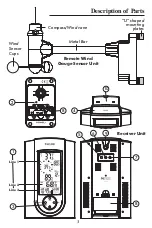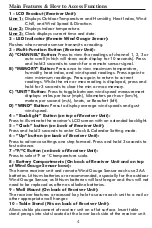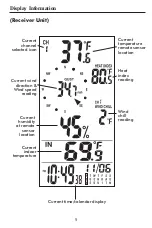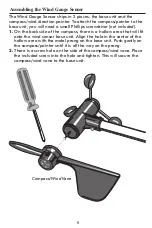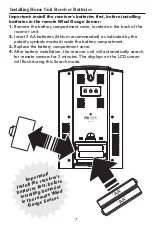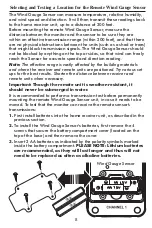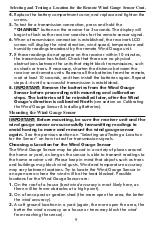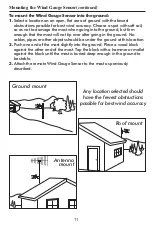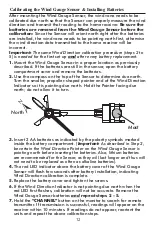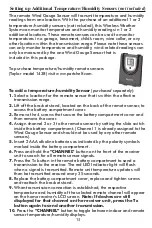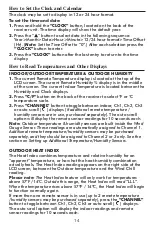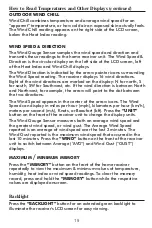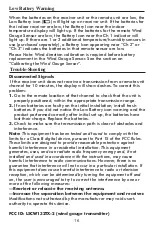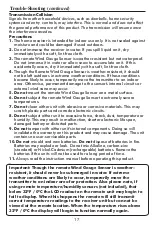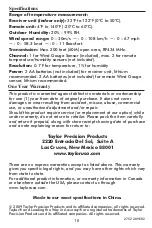
Trouble-Shooting (
continued
)
Transmission Collision
Signals from other household devices, such as doorbells, home security
systems and entry controls, may interfere. This is normal and does not affect
the general performance of this product. The transmission will resume once
the interference recedes.
Precautions
1.
The home receiver is intended for indoor use only. It is not sealed against
moisture and could be damaged if used outdoors.
2.
Do not immerse the receiver in water. If you spill liquid on it, dry
immediately with a soft, lint-free cloth.
3.
The remote Wind Gauge Sensor is weather-resistant but not waterproof.
Do not immerse it in water or allow snow to accumulate on it. If this
accidentally occurs, dry it immediately with a soft, lint-free cloth.
4.
Though the Remote Wind Gauge Sensor is weather-resistant, it should
not be left outdoors in extreme weather conditions. If these conditions
become likely to occur, temporarily move the transmitter to an indoor
area. Otherwise, permanent damage to the sensor's internal circuits or
external wind vane may occur.
5.
Do not
mount the remote Wind Gauge Sensor on a metal surface.
6.
Do not
subject the remote Wind Gauge Sensor to extremely severe
temperatures.
7.
Do not
clean either unit with abrasive or corrosive materials. This may
scratch plastic parts and corrode electronic circuits.
8.
Do not
subject either unit to excessive force, shock, dust, temperature or
humidity. This may result in malfunction, shorter electronic life span,
damaged battery or distorted parts.
9. Do not
tamper with either unit's internal components. Doing so will
invalidate the warranty on this product and may cause damage. The unit
contains no user-serviceable parts.
10.
Do not
mix old and new batteries.
Do not
dispose of batteries in fire.
Batteries may explode or leak. Do not mix Alkaline, carbon-zinc
(standard) or Nickel-Cadmium (rechargeable) batteries. Remove the
batteries if the units will not be used for a long period of time.
11.
Always read the instruction manual before operating this product.
Important: Though the remote Wind Gauge Sensor is weather-
resistant, it should never be submerged in water. If extreme
weather conditions are likely to occur, temporarily move the
transmitter to an indoor area for protection. Also please note, if
using remote temperature/humidity sensors (not included), that
below 32ºF / 0ºC the LCD readout on the remote unit may begin to
fail to display. When this happens the remote will still transmit
correct temperature readings to the receiver unit but can not be
viewed at the remote location. When the temperature rises above
32ºF / 0ºC the display will begin to function normally again.
17

